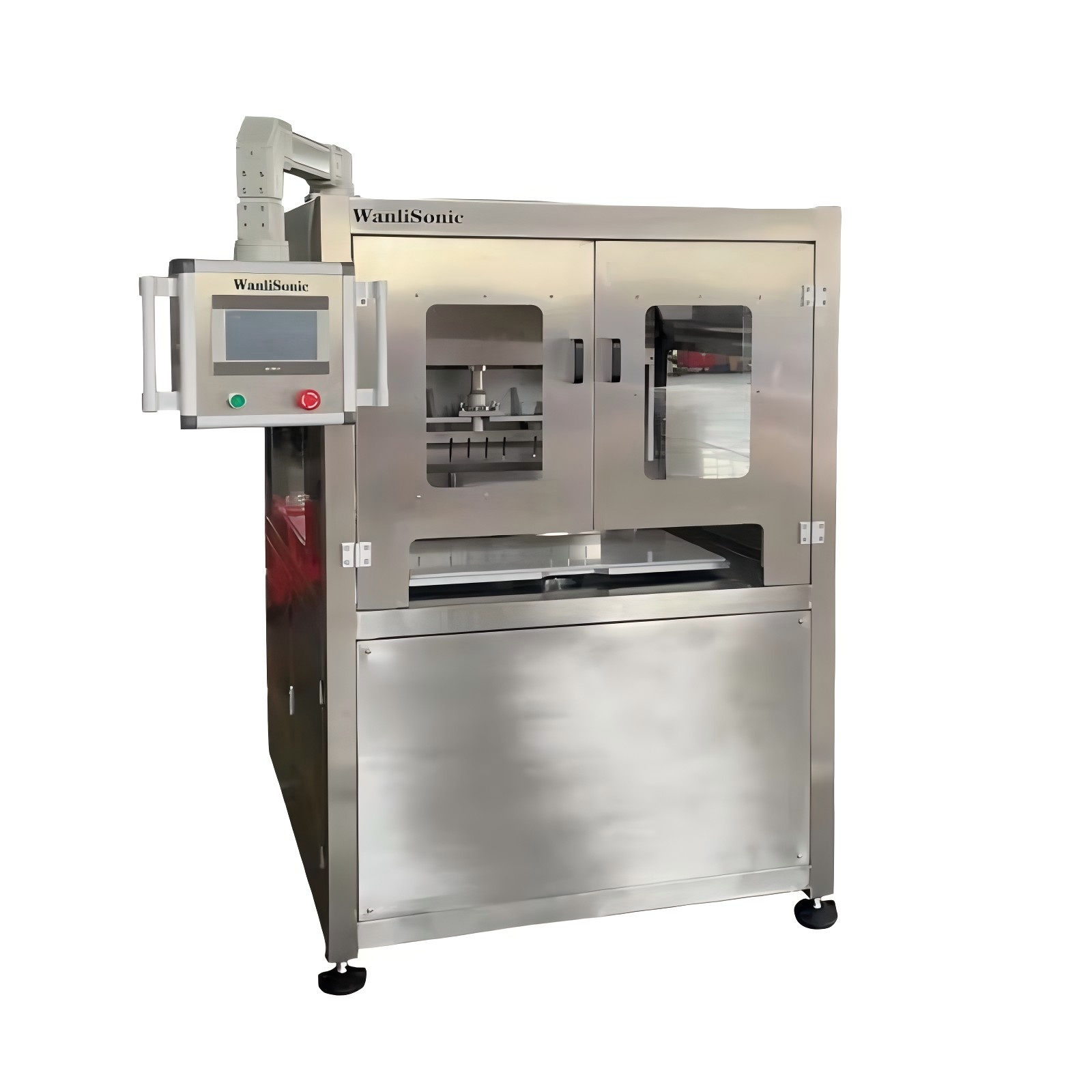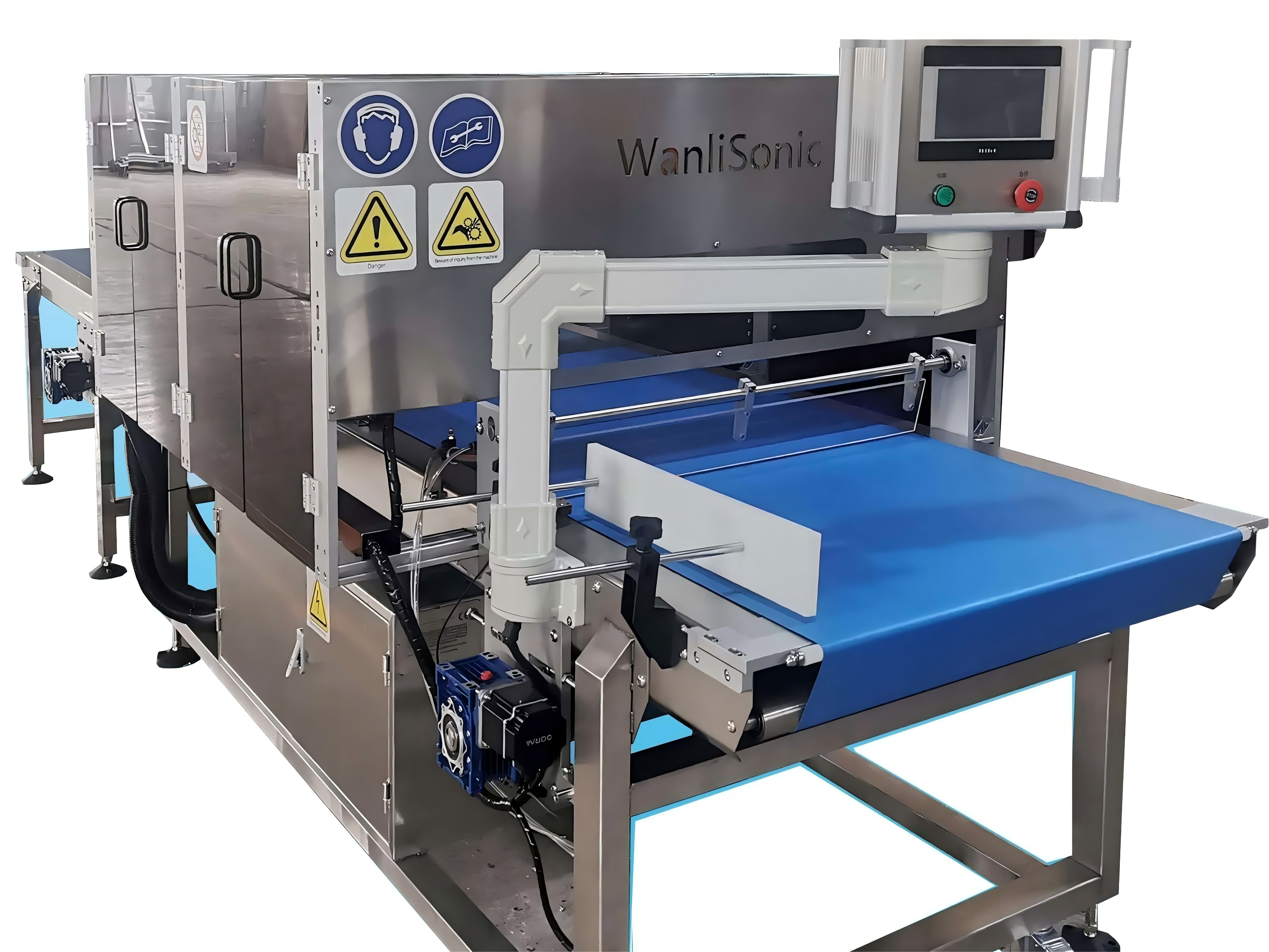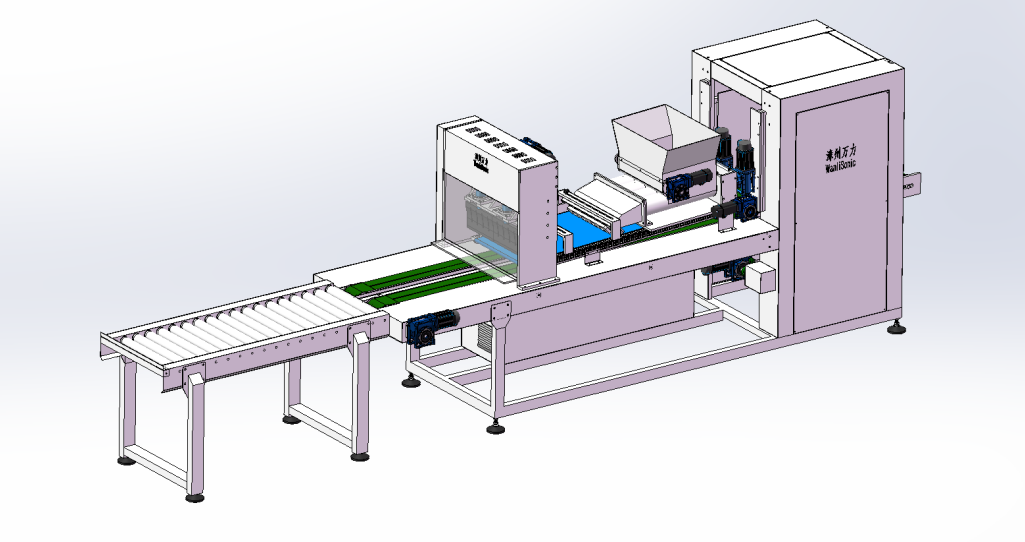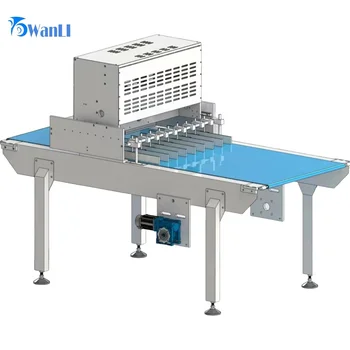Introduction
Baking has come a long way from the simple kitchens of our ancestors to the high-tech environments of today. One of the most revolutionary advancements in the baking industry is the ultrasonic cookie cutting machine with automatic tray arrangement. This sophisticated piece of equipment is transforming the way cookies are made, ensuring precision, efficiency, and quality that manual methods can hardly match. But what exactly is this machine, and why is it becoming indispensable in modern bakeries?
What is an Ultrasonic Cookie Cutting Machine?
Definition and Basic Functionality
An ultrasonic cookie cutting machine is a state-of-the-art device that uses high-frequency ultrasonic waves to cut dough into precise shapes and sizes. Unlike traditional cutters that rely on sheer mechanical force, ultrasonic cutters use vibrations to create clean cuts, reducing the chances of dough sticking or deforming.
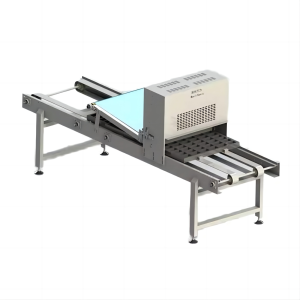
Key Components of the Machine
The main components of an ultrasonic cookie cutting machine include:
- Ultrasonic Transducer: Converts electrical energy into mechanical vibrations.
- Cutting Blade: Vibrates at ultrasonic frequencies to cut through dough.
- Control System: Manages the cutting process, ensuring accuracy and consistency.
- Automatic Tray Arrangement: Organizes the cut cookies onto trays for baking, streamlining the production process.
How Does Ultrasonic Cutting Work?
The Science Behind Ultrasonic Technology
Ultrasonic cutting utilizes high-frequency sound waves, typically in the range of 20 kHz to 40 kHz. These sound waves create rapid vibrations in the cutting blade, which significantly reduces the friction between the blade and the dough. This results in cleaner cuts and minimal resistance, allowing for intricate and precise cookie shapes.
Advantages Over Traditional Cutting Methods
Traditional cookie cutters can struggle with sticky or delicate doughs, often resulting in uneven shapes and wasted materials. Ultrasonic cutters, on the other hand, handle these challenges effortlessly, offering:
- Superior Precision: Exact cuts without dough deformation.
- Consistency: Every cookie looks identical, enhancing product quality.
- Efficiency: Faster cutting speeds reduce production time.
Automatic Tray Arrangement System
What It Is and How It Works
The automatic tray arrangement system is an integrated feature that organizes cookies onto baking trays immediately after they are cut. This system uses robotic arms or conveyor belts to ensure that each cookie is placed in the correct position on the tray, ready for baking.
Benefits of Automatic Tray Arrangement
Implementing an automatic tray arrangement system offers several benefits:
- Time-Saving: Eliminates the need for manual tray arrangement, speeding up the production line.
- Consistency: Ensures uniform placement of cookies, which is crucial for even baking.
- Labor Efficiency: Reduces the need for manual labor, lowering operational costs.
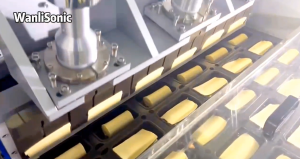
Features of an Ultrasonic Cookie Cutting Machine
Precision Cutting
Ultrasonic technology provides exceptional precision, allowing for intricate designs and uniform shapes that are difficult to achieve with traditional cutters.
Versatility in Shapes and Sizes
These machines can be programmed to cut a wide variety of shapes and sizes, making them ideal for both standard cookies and custom orders.
Consistency and Uniformity
Every cookie is cut to the exact same dimensions, ensuring a consistent product that meets high-quality standards.
Benefits of Using Ultrasonic Technology in Baking
Enhanced Efficiency
Ultrasonic cutting machines significantly speed up the production process, allowing bakeries to produce larger quantities of cookies in less time.
Reduced Waste
The precision of ultrasonic cutting minimizes dough waste, making the process more cost-effective and environmentally friendly.
Improved Product Quality
Clean cuts and consistent shapes lead to better presentation and uniform baking, enhancing the overall quality of the cookies.
Applications in Commercial Baking
Large-scale Production
Ultrasonic cookie cutting machines are perfect for large-scale operations, enabling bakeries to meet high demand without compromising on quality.
Specialty and Custom Cookie Designs
For bakeries that offer custom designs, ultrasonic machines provide the flexibility and precision needed to create unique and intricate shapes.
Setting Up an Ultrasonic Cookie Cutting Machine
Installation Process
Setting up an ultrasonic cookie cutting machine involves several steps:
- Site Preparation: Ensuring the workspace is suitable for the machine.
- Machine Setup: Installing the machine and connecting it to the necessary power and control systems.
- Calibration: Fine-tuning the machine to ensure accurate cutting.
Maintenance Tips
To keep the machine in optimal condition, regular maintenance is essential:
- Clean the Blade: Prevent dough buildup to maintain cutting precision.
- Check the Control System: Regularly inspect and update software for optimal performance.
- Lubricate Moving Parts: Ensure all mechanical parts are well-lubricated to avoid wear and tear.

Cost and Investment
Initial Investment
While the initial cost of an ultrasonic cookie cutting machine can be substantial, it’s an investment that pays off in the long run through increased efficiency and reduced labor costs.
Long-term Financial Benefits
Over time, the machine’s ability to produce high-quality, consistent products with minimal waste leads to significant savings and higher profitability.
Comparing Ultrasonic Machines with Traditional Cutters
Speed and Efficiency
Ultrasonic machines operate much faster than traditional cutters, significantly boosting production capacity.
Product Quality and Consistency
The superior precision of ultrasonic cutters ensures that every cookie is of the highest quality, which is harder to achieve with manual methods.
Environmental Impact
Energy Consumption
Ultrasonic machines are generally more energy-efficient than traditional cutters, reducing the overall environmental footprint.
Waste Reduction
The precision of ultrasonic cutting leads to less dough waste, contributing to more sustainable baking practices.
Case Studies
Success Stories from Bakeries
Many bakeries have successfully integrated ultrasonic cookie cutting machines into their operations, experiencing significant improvements in efficiency and product quality.
Lessons Learned
These case studies often highlight the importance of proper training and maintenance to maximize the benefits of the technology.
Future Trends in Cookie Cutting Technology
Innovations on the Horizon
Future advancements may include more sophisticated automation, enhanced cutting precision, and integration with other baking technologies.
Potential Developments in Automation
We can expect to see further automation in the cookie production process, from dough mixing to final packaging, driven by advances in AI and robotics.
Choosing the Right Machine for Your Bakery
Factors to Consider
When selecting an ultrasonic cookie cutting machine, consider factors such as production volume, desired cookie shapes, and budget.
Tips for Making the Best Decision
- Research: Look into different models and brands.
- Test: If possible, test the machine before purchase.
- Support: Ensure the manufacturer offers good customer support and maintenance services.

Conclusion
The ultrasonic cookie cutting machine with automatic tray arrangement is a game-changer for the baking industry. Its ability to produce high-quality, consistent cookies quickly and efficiently makes it an invaluable asset for modern bakeries. By investing in this technology, bakeries can enhance their production capabilities, reduce waste, and improve overall product quality.
FAQs
What is the lifespan of an ultrasonic cookie cutting machine?
Typically, these machines have a lifespan of 10-15 years with proper maintenance.
How easy is it to clean the machine?
The machine is designed for easy cleaning, with removable blades and accessible components.
Can it handle different types of dough?
Yes, ultrasonic cookie cutting machines are versatile and can handle various types of dough, including sticky and delicate ones.
Is training required to operate the machine?
While the machine is user-friendly, some training is recommended to ensure optimal use and maintenance.
What kind of maintenance is needed?
Regular cleaning, lubrication of moving parts, and software updates are necessary to keep the machine running smoothly.

